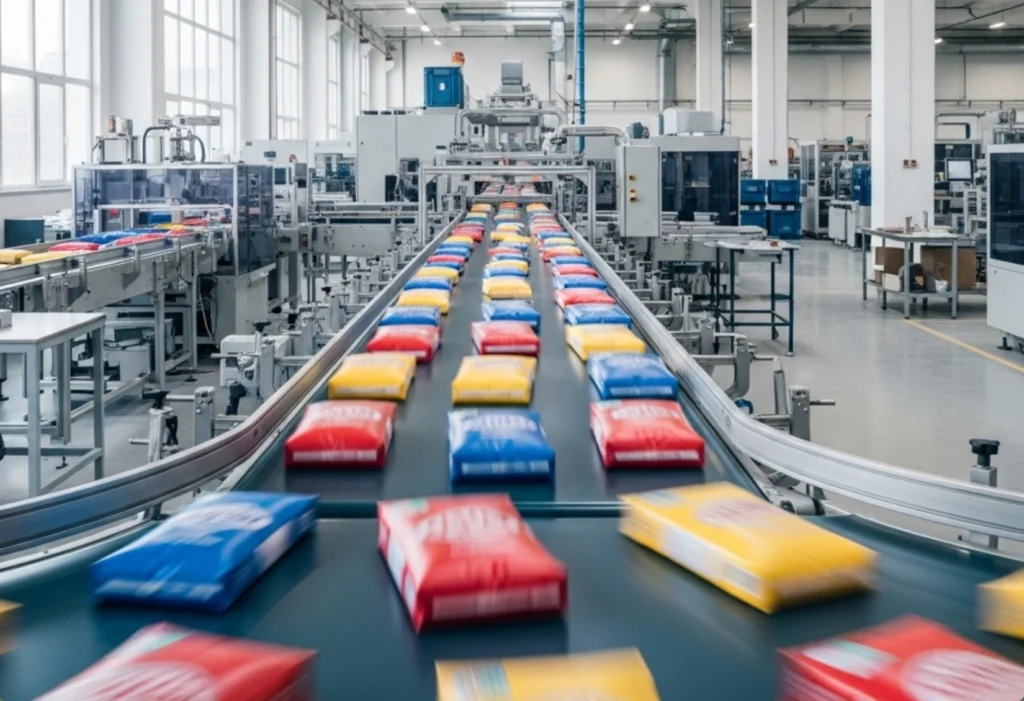FDA Food Packaging Guidelines: A Comprehensive Overview
What Does the FDA Require for Food Packaging?
The Food and Drug Administration oversees a
wide array of packaging standards to ensure
that containers, pouches, films, and coatings
do not introduce harmful substances into food,
alter its composition, taste, smell, or jeopardize
consumer health. While not every provision
mandates testing, the FDA generally accepts
vendor certifications and compliance
documentation to demonstrate safety in
food-contact applications.


Global Regulatory Considerations
While FDA standards are required for compliance
within the United States, multinational brands
must also account for other international
regulations—such as EU Regulation No. 10/2011,
Brazil’s RDC 91/2001, and MERCOSUR GMC
3/92—when distributing products globally.
Key FDA Regulations for Food Packaging (Title 21 CFR Parts 170–199)
Part of Title 21 of the Code of Federal Regulations covers additives approved for food
contact, both direct and indirect. These include:
- Part 172 – Permitted direct food additives.
- Part 173 – Secondary direct additives (e.g., solvents, ion-exchange resins)
- Part 174 – Indirect additives such as adhesives and general components
- Part 175 – Coatings and adhesive systems
- Part 176 – Paper and paperboard-based packaging components
- Part 177 – Polymers intended for food-contact use
- Part 178 – IProduction aids including adjuvants, sanitizers, and intermediates
- Part 179 – Materials permissible under irradiation processes
Parts 170–199 also include procedural guidelines for petitions, GRAS (Generally
Recognized As Safe) determinations, threshold exemption levels, and the Food Contact Notification (FCN) pathway for newly proposed substances
What Constitutes a Food Contact Substance?
Food Contact Substances (FCS) encompass everything expected to touch food—whether it’s directly or indirectly. This includes plastics, inks, adhesives, coatings, metal foils, and layered barrier materials. Because chemicals may migrate into foods during typical use—especially under heat or when in contact with fatty or acidic products—FDA regulations establish rigorous limits to minimize health risks.
Why FDA Compliance Matters in Food Packaging
When it comes to packaging coffee, tea, and food products, compliance with FDA
standards isn’t just a regulatory checkbox—it’s a critical part of protecting your brand and your customers. FDA guidelines shape decisions around material selection, structural layers, safety testing, and manufacturing protocols. Every component—from inks and adhesives to barrier films and sealants—must meet specific criteria outlined in relevant CFR parts to ensure they are safe for direct or indirect food contact.
How Package Joes Helps You Stay Aligned
At Package Joes, we understand the
importance of compliance at every step
of the packaging journey. That’s why we
source materials only from trusted
suppliers who provide FDA-compliant
components, in accordance with Parts 172
through 179 and relevant GRAS or FCN
listings. Our processes are built to align
with FDA Good Manufacturing Practices
(GMP), helping your business meet
regulatory expectations with confidence.
The Business Case for Safe, Compliant Packaging
Choosing food-safe packaging isn't just
about meeting legal requirements—it’s a
strategic investment in your brand.
FDA-compliant materials help prevent
contamination, maintain product freshness,
and protect your business from potential
liability. More importantly, they signal to
customers that you value safety and
quality—earning their trust with every bag
you deliver.